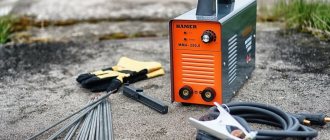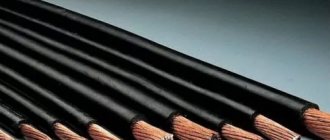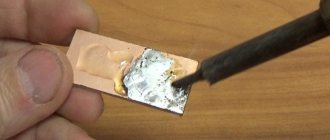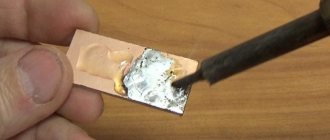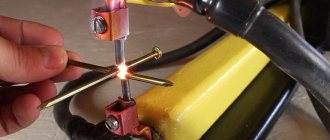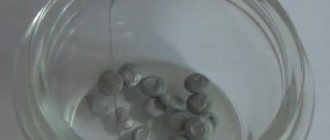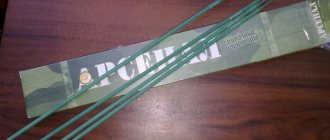Magnetic mass for welding is a special device that provides reliable fixation on metal surfaces. This allows you to comfortably perform welding work on complex surfaces where the use of classic alligator clips is impossible. There are many design options that depend on the work conditions. The structure of this device is not particularly complicated. For this reason, some craftsmen prefer to use homemade magnets for welding.
What's happened?
This device is mounted on the working plane of the workpiece . Thanks to the active magnetic field, a strong fastening is achieved, creating a closed electrical circuit - the main condition for the formation of an electric welding arc.
The tool is especially popular among novice welders - it will take a few minutes to familiarize yourself with the principles of the work. Experienced specialists use magnetic mass for welding machines for critical work - welding large-diameter pipes or connecting load-bearing units made of profile materials.
Rules for servicing the inverter device
Maintenance of an inverter-type welding machine includes the following.
- Visual inspection. It must be carried out every time before and after starting work in order to detect any damage to the insulation of welding cables and power cables. In addition, during an external inspection, the absence of damage to the housing and controls is checked (it is necessary to check the current regulator).
- Internal cleaning of the unit. This is carried out after removing the casing from the device to remove accumulated dust and dirt from all its components. Cleaning is carried out with a jet of compressed air directed at dusty parts.
- Checking and cleaning the device terminals. Power cable connection points should be checked periodically. If oxidation is found on the terminals, remove it with fine sandpaper.
Also avoid exposure to drops of water, water vapor and other liquids that may enter the machine and cause a short circuit in the electrical circuits of the inverter welding machine. If liquid gets into the device, remove the cap and remove all moisture. Dry the inverter electronic board thoroughly with a regular hairdryer.
The direction of electron movement is regulated by polarity by switching the wires to “plus” or “minus”. That is, when working with DC welding, two settings are possible:
- Straight polarity. The negative is connected to the electrode, the negative is connected to the ground terminal. In this case, the current moves from the electrode to the workpiece, and the metal heats up more.
- Reverse polarity. The plus is connected to the electrode, the minus to the ground terminal. The movement of current from minus to plus (from the workpiece to the electrode) creates more intense heating.
Direct and reverse polarity of the connection when welding with an inverter is used depending on the work and the quality of the materials. With alternating current, the type of connection is not important, but with direct current, you can change the polarity manually.
Design of magnetic contact and its characteristics
Consists of two nodes:
- Cable holder . The ground cable of the welding equipment is attached to it using a bolted connection.
- Magnetic node . The size of the magnet depends on the design features. Some models are equipped with a mechanism that regulates the pressure of the magnet on the working plane. Professional devices have switches.
The parts are connected to each other by a rigid fastening. The main characteristics of the devices are:
- Dimensions and weight. Depends on the manufacturer and specific model. The average weight is 1-1.2 kg.
- The force of attraction to the surface. Varies in the range from 2 to 50 kg.
- Welding current strength. The maximum value of the parameter is measured in amperes. For entry-level models, it does not exceed 200 A. An advanced tool is capable of operating at 400-500 A.
- Execution type. They produce special clamps for corners with gap adjustment.
Safety regulations prohibit connecting a cable without a special lug, which is clamped with bolts.
Setting up the device
The quality of welding depends on the correct settings of the welding inverter, especially regarding the correct choice of electrodes. You should also consider:
- seam depth;
- location of the seam in space (vertical or horizontal);
- brand or type of metal being welded;
- metal thickness and so on
You should know that corresponding electrodes are made for each type of metal. Electrodes with a diameter of up to 5 mm can be used with inverters. But for each thickness of the equipment it is necessary to select the strength of the appropriate welding current. To properly set up your welding machine, use the table below.
Advantages and disadvantages
Electric welding is the most common method of joining metal products. The quality of the future connection depends on the integrity of the electrical circuit .
That is why the invention of the device in question aroused serious interest among specialists.
The popularity of magnetic mass for welding is due to the following advantages:
- Reliable fixation will allow the welder to concentrate on work without being distracted by adjusting the clamp.
- The working mechanism is a permanent or switchable magnet. Subject to compliance with operating conditions, it can serve for an unlimited period.
- You do not need any consumables to use the holder.
- Even compact models have a contact patch sufficient for reliable closure.
- The device is resistant to sudden voltage changes or temperature changes.
- The magnet can be attached to any place to create comfortable conditions for making the connection.
Despite the large number of advantages, there are a number of disadvantages:
- Before use, it is necessary to prepare the surface. The procedure involves removing dirt and foreign particles.
- There is no possibility of attaching to small parts, for example, a circle with a small cross-section.
- It is impossible to work with non-ferrous metals because they are not magnetic.
Clamp types
The grounding terminal for the welding machine can be magnetic or in the form of a clothespin, clamp, or centralizer. Let's look at the main varieties.
"Crocodile" ("clothespin")
This type of clamp is used in most electric welding machines. Attaches directly to the workpiece. Among the advantages of an alligator leather clip it is worth highlighting:
- reliable fastening to the surface of the product;
- the ability to attach a wide range of geometric shapes to parts;
- quick attachment/detachment;
- Ease of use;
- low connection resistance;
- wide opening angle.
The disadvantages of clothespins are as follows:
- it is not always possible to attach the “crocodile” directly to the part (for example, to a large diameter pipe);
- The weak point of the mechanism is the spring, which does not have the maximum level of strength.
Alligator clips are most often found in 200 A, 300 A, 500 A versions. Professional welders will need modifications for 400-500 amps.
Magnetic welding compound
This type of terminal is also often used by welding professionals. Advantages of magnetic locking:
- fastening to any surface, in particular to pipes;
- excellent option for hard-to-reach places;
- simple design;
- ability to withstand voltage surges without exhaustion;
- significant contact area.
Disadvantages of magnetic devices:
- unreliability of fastening in the case of a small contact area with the part;
- incompatibility with workpieces made of non-ferrous metals;
- the need for periodic cleaning;
- demagnetization due to overheating.
It is worth remembering that the magnetic mass clamp for the welding machine heats up when attached to a dirty surface.
Clamp
This is a screw mechanism. Features less frequent use than the two types of ground terminals listed above. Among the advantages of clamps:
- reliable fastening;
- Smooth current transmission due to excellent contact with the workpiece.
The disadvantages of clamps include a complex mechanism and cluttered design.
How to use?
The technology for using the device is not complicated. First of all, the welding cable is connected, after which installation begins .
Most units are equipped with switches that activate a magnetic field. At rest, the magnet will not be attracted to the surface.
One person is required for commissioning. After contact with the working plane, the device must be activated. Upon completion of these steps, the clamp is in operating mode.
After completing the work, perform the above steps in reverse order. Do not try to separate the switched-on device from the part - many models have quite high tear strength. In addition, this may damage the latch.
Upon completion of work, you should immediately clean the contact surface of the magnet from metal shavings, since they negatively affect the force of attraction.
Magnet or clip
Typically, welding machines are equipped with a piece cable with a clamp-type holder. At first glance, this is convenient; such a device can be securely attached to almost any surface (foil, metal tiles, etc.).
But there are situations when it is not possible to install such a mass on one product or, more often, it burns out. A good alternative would be the magnetic contact of the welding cable.
What are its advantages over a standard clothespin clip?
- This is the ability to provide contact with almost any surface without any problems.
- The simple design is almost forever in use and will not break, since there are no springs or mechanisms.
- Such a mass perfectly withstands voltage and load changes, as a result of which it does not burn out.
- The large contact area ensures reliable closure.
But this type of sensory attack also has its drawbacks. The main disadvantage is that the magnetic mass for welding will not be installed well on small parts, for example, a beam or a stiffener. The second negative property will be the impossibility of fastening to welded parts made of non-ferrous metals: aluminum, copper and others. In addition, over time, the magnet becomes contaminated with metal shavings and will need to be cleaned periodically.
Without taking into account the last two factors, this is a fairly affordable device that you can even make with your own hands without additional costs.
Is it worth buying?
The answer to this question can only be given by the master performing the work. For a novice welder who has just started his professional career, this device can make life significantly easier.
If a specialist works primarily with non-ferrous metals, a magnetic clamp will most likely not be useful.
Experienced workers have a set of various clamps for all occasions, including this device.
The cost of the device is quite high. If you have knowledge in the field of electrical engineering, you can try to make it yourself. The technology and manufacturing process will be discussed below.
Magnetic particle testing method
Small particles of magnetizable metal are capable of changing their spatial position under the influence of field scattering. The essence of the magnetic testing method is to use ferromagnetic powder:
- in dry form, it disperses over a flat surface, giving the most reliable result;
- in the form of an aqueous emulsion - the particles will be held at a slight slope;
- an oily suspension with low fluidity that envelops the controlled area (kerosene and transformer oil are used for the base).
Under the influence of power lines, sawdust creates a certain pattern; in the area of highest concentration, the layer of particles is dense. The inspection is carried out on smooth prepared surfaces with a leveled seam bead. A certain roughness is allowed within the sensitivity limits of the flaw detector used.
Scheme of the magnetic particle testing method
The accuracy of control is affected by several parameters:
- size of magnetic particles;
- type of applied composition;
- magnetization method;
- location of defects relative to field lines;
- quality of preparation of the control zone;
- types of discontinuities.
For the dry method, ferric oxide or crushed iron oxide is used. The powder is applied to the metal using a sprayer or a fine mesh sieve. At the moment of directing the field, the controlled area is lightly tapped, making the particles mobile. The same area is checked twice to ensure the reliability of the results.
In electric arc welding, metal parts are magnetized by the welding current. When strong residual magnetization remains, testing with magnetic powders is carried out without the use of flaw detectors.
The magnetic particle method is used to recognize various defects up to 2 microns wide at a depth of up to 2 mm:
- surface cracks;
- delamination;
- emptiness.
You can control not only the seam itself, but also the thermally affected area, where there is a high probability of internal cracking. To work you need a magnetizing device, a magnetic flaw detector.
Types of equipment:
- mobile, for work in field conditions - MD-4K or MD-6, operating on permanent magnets and not requiring power;
- stationary – KhMD-10P, MD-5, UMDE-2500, characterized by high speed control of welded joints;
- mobile or portable flaw detectors used at industrial sites, remote sites - MD-50P, PMD-70.
The magnetization unit may include solenoids, electromagnets operating on alternating current, connected to a standard electrical network. After magnetization, the parts are demagnetized by a device mounted in the flaw detector.
How to do it yourself?
Experienced craftsmen try to reduce all costs for the purchase of auxiliary and working equipment to a minimum. Due to the simplicity of the design, no special equipment or complex tools are needed for manufacturing .
To assemble a homemade device, you should prepare the following equipment:
- Magnet . The working part of the unit. It must have sufficient power to securely attach to metal. Magnets from old car speakers with a power of 10-15 W are ideal for this purpose.
- Two washers . Their size must correspond to the diameter of the magnet.
Sometimes it can be difficult to select washers for the size of the magnet. It is much easier to make washers yourself from sheet metal.
- A set of hardware for fixing the welding cable.
Algorithm for performing the work:
- One of the washers will make contact with the working plane. It is necessary to make a hole in it corresponding to the size of the bolt head.
- The cap is cut to the thickness of the washer.
- After preliminary preparation, the structure is connected by welding. The product should resemble a mushroom, in which the threaded part of the bolt plays the role of a leg.
- A magnet is placed on the mushroom. Place a second washer on the reverse side.
- A welding tip is attached to the thread, and the entire structure is secured with nuts.
Functionality testing is performed only in the field. The quality criterion will be the correct functioning of the welding machine.
Do-it-yourself welding machine compound is a great way to save money, as well as a means to test your DIY construction skills.
A properly assembled device will last no less than the factory clamp.
General recommendations for selection
When choosing a grounding clamp, consider the following nuances:
- Optimal weight of the connected wire. Otherwise, the welding mass clamp may come off at the most inopportune moment.
- The maximum current supplied by the welder. If the terminal is designed for a lower current than the welding machine, depletion of the contact area is guaranteed.
- Clamp opening angle. The larger it is, the wider the scope of application, since thanks to it it will be possible to attach the mass to products of different sizes.
- Spring reliability. If compression is provided by a spring, the properties of this element must ensure reliable grip of the workpiece.
Also pay attention to the popularity of the brand. Buy products only from trusted manufacturers to avoid counterfeiting.
DIY mass
Make your own ground clamp. To do this, take a magnet, two magnetic washers, a bolt and a nut. Then perform the following steps: 1) drill a hole in the washer with a diameter close to the size of the bolt head - this will be a contact washer; 2) grind the top of the bolt to the thickness of the washer; 3) boil and clean up what happened; 4) pass the bolt through the magnet and cover the latter with the remaining washer; 5) secure the end of the cable to the rod; 6) tighten everything with a nut. Spending some time on a DIY terminal can save you a lot of money.
Weight per welding machine plus or minus
There are welding machines that use alternating current, and there are inverter machines that operate exclusively on direct current. Inverters have two output connectors: “plus” and “minus”. In one, a wire with a holder is connected, in the other, a grounding wire with a clamp. In this case, the connection order can be changed to achieve different results during the welding process.
Straight polarity
To operate in this mode, you need to connect the wire with the holder and the electrode to the “minus”, and the ground to the “plus”. With direct polarity, the workpiece receives a higher temperature, and not the electrode itself. Thanks to this, you can boil the very root of the seam. Welding thick metal is also better.
Reverse polarity
For such welding, the cable with an electrical holder and electrode is connected to the “plus”, and the grounding of the welding machine is connected to the “minus”. In this mode, the highest temperature will be on the electrode, not on the workpiece. Moreover, in this case, the temperature at the tip of the electrode will be almost a thousand degrees lower than when soldering in straight polarity mode. This allows you to weld thin metals with minimal risk of burns.
Types of welding fixtures
Why are magnetic accessories used in welding? The technology of joining parts by welding may require the welder, for example, to place different workpieces at angles from 30 to 90 degrees or to precisely orient the edges in the same plane. Such magnets are especially useful for welding metal structures from profile pipes. Excellent quality can only be achieved by using various types of corners and holders.
Most often in welding practice the following devices will be required:
- Magnetic corners (permanent and switchable).
- Fastening devices (for fixing in one position).
- Clamps (used to clamp parts).
- Spacers (to create gaps).
Magnetic corners
The main advantage of such a device is that it allows you to reduce the time required to prepare parts for welding. Magnetic welding angle allows you to:
Methods of application
- Reduce the labor intensity of the process. There is no need to spend a lot of time fiddling with securing parts.
- Possibility to fix parts of the product at almost any angle.
- The compactness of the devices simplifies working with them.
- Automate the welding process. Switchable magnets allow you to quickly connect and disconnect fasteners.
The most basic products have simple welded joints, but more often they have complex configurations and seam shapes. And no one can deny accuracy in such work. Therefore, magnetic devices with different functionality are often used: fixed and adjustable angles, or permanent and switchable magnetic systems.
The design of permanent magnetic corners is simple. These are two metal plates with a magnet located between them. The most common form is in the form of a house with a gable roof, a cut-off ridge and a round hole in the middle. There are also others for cooking in all three coordinates of space, or more simply - tetrahedral or polyhedrons, as well as cylinders.
Switchable magnets
The magnetic holder for welding can be either permanent or switchable. They allow you to secure parts by inclusion.
Their advantage is that the switchable magnet for welding can be removed with one turn of the switch, after fixing the parts with welding points. This also makes it easier to clean the magnet from chips and small scraps (unlike a permanent magnet).
Also, all magnetic angles can be standard or universal. If the standard ones have precisely fixed angles, then the universal ones will allow you to weld two parts at an angle, for example, 32 degrees.
Clamps
This device is designed to pull two parts together and temporarily fix them.
The most common form is in the form of the letter “p” turned on its side. One side serves as a permanent retainer, and the other has a threaded screw clamp.
The size of parts that can be fixed with clamps is limited by their parameters.
Such clamping devices will be useful not only for welding, but also for other types of plumbing work.
The use is simple - the parts are placed in a clamp and tightened with a screw.
Spacers
To create gaps between the parts of the product being welded, you can make a simple spacer from a piece of pipe or fittings. But to reduce preparation time, you can use factory-made products.
The operating principle of such devices, like clamps, is based on a screw thread. Only functioning, on the contrary, to unclench.
Types of fastenings
If the structure after assembly falls apart after the slightest load, it will be a shame, because time and materials have been wasted. After this, all that remains is to get to work again.
The second option for poor preparation is improper welding. Let's assume that the element was welded differently: it changed its place when the metal cooled or changed its shape. This is much more difficult to fix.
It is to avoid such bad situations that special devices have been created that greatly facilitate welding and preparation for it - a switchable magnet for the welder. Since there is a lot of work to be done, the fastenings are grouped into several types:
- Installation. They can be considered basic devices - they help to correctly outline and install the necessary elements.
- Fastening devices. Reliably fix the elements in the required position.
- Fastening and installation. At the same time, they help install and secure parts in the required positions.
- Clamps. Used for fastening metal parts.
- Clamps. It's simple - if the parts are small, it's easier to use them rather than other bulky devices.
- Spacers. Helps align parts.
